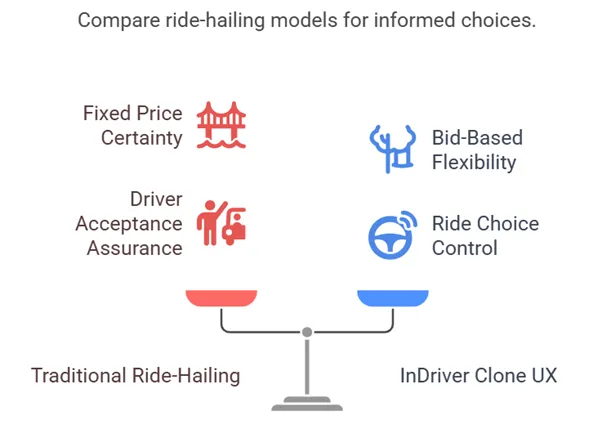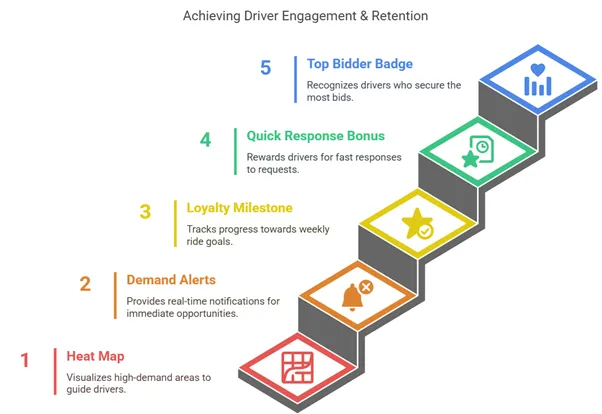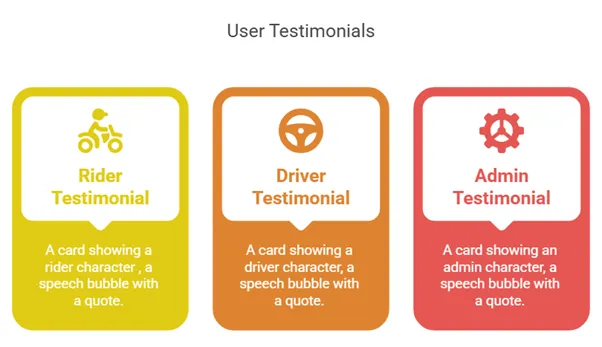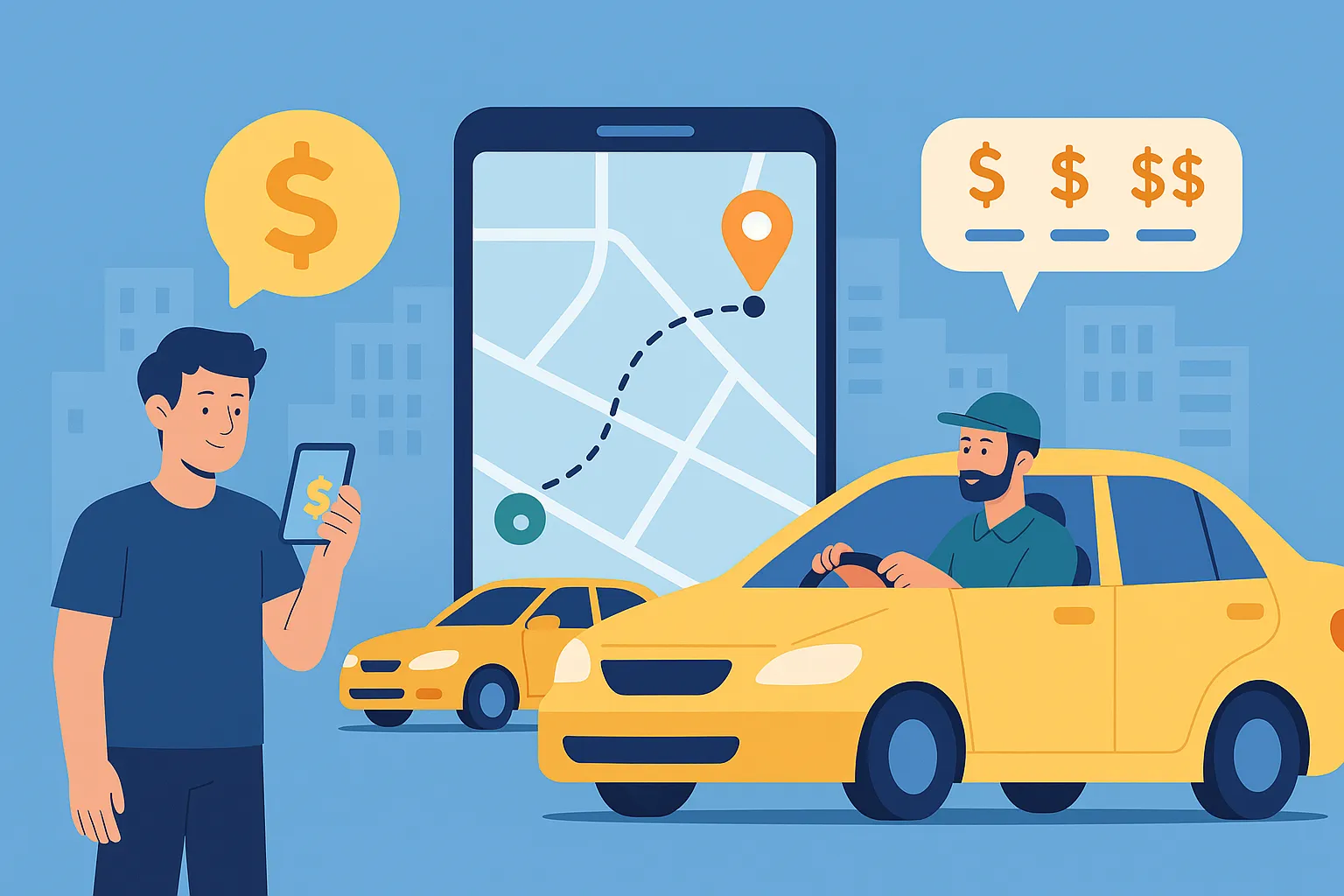Back when you were just a scrappy founder juggling ideas in a Google Sheet, the dream was simple: build something that sticks. Fast forward to today — the world’s not short on ride-hailing apps, but retaining users? That’s a whole other beast.
If you’ve ever launched a ride-booking platform, you already know the painful churn cycle. Riders flirt with every new promo, and drivers bounce between apps like it’s speed dating. So what’s the secret sauce behind platforms that actually retain users?
Spoiler: It’s not just UI. It’s how your users feel in control. That’s exactly what the bidding model — pioneered by InDriver and perfected in our InDriver Clone — delivers. Let’s unpack how it turns casual users into loyalists, and drives not just retention but real returns.
At Miracuves, we help founders like you build performance-optimized apps that Why Traditional Ride-Hailing Models Struggle with Retention
Why Traditional Ride-Hailing Models Struggle with Retention
The Flat Rate Friction
Most ride-hailing apps follow a simple formula: rider enters destination → app sets price → driver accepts or rejects. But here’s the catch — that model strips away negotiation, and more importantly, control. Riders often feel they’re at the mercy of unpredictable surge pricing, and drivers feel underpaid.
The “One-Click & Gone” Problem
Riders often use your app once, then hop over to a competitor for a discount. With no human connection or dynamic interaction, the loyalty bar drops to zero. You’re essentially spending marketing dollars just to rent attention — not build long-term value.
The Bidding-Based Edge: Why It Works
It’s Psychological: Users Love Feeling in Control
In our InDriver Clone, we empower users to name their price, creating a micro-negotiation loop that drives deeper engagement. This taps into behavioral economics — giving users even an illusion of control drastically improves perceived value.

Drivers Get More Agency (And Income Transparency)
Drivers aren’t forced to accept a flat payout. They can review multiple bids, assess distance, and choose jobs that align with their value of time. This results in higher satisfaction and lower turnover on the supply side.
Built-In Features That Drive Stickiness
1. Smart Bid Recommendations (For Newbies)
Not everyone’s comfortable haggling. That’s why we provide ML-powered bid suggestions based on distance, location traffic, and time of day. It feels personalized without needing manual input.
2. Heat Zone Notifications for Drivers
Drivers get alerts when bids surge in nearby zones — increasing ride acceptance rate and keeping them logged in longer. Real-time demand visibility = more time spent earning.
3. Loyalty Rewards Based on Participation
Forget boring referral coupons. We bake in gamified rewards — like bonus points for accepting rides under 3 minutes or completing X successful bids per week.

Revenue Flows That Scale Beyond Bookings
Commission Model, But Smarter
Instead of a fixed cut, our InDriver Clone lets you set flexible commission brackets based on factors like distance, ride type, and driver rating. This maximizes revenue without alienating top-performing drivers.
Surge Participation Fees (Optional)
Rather than charging users extra automatically, you can offer bidding priority slots during peak hours — for a fee. This turns a surge from a cost center to a revenue stream.
In-App Ads & Wallet Integrations
As users grow accustomed to bidding, they spend more time in the app. We monetize that attention via targeted local ads, offers, and even micro-financing partners integrated into the rider wallet.
Real-World Success: The InDriver Blueprint
InDriver’s own meteoric rise wasn’t fueled by polished UX or deep VC pockets. It spread because users told their friends, “Hey — you can actually choose your price.”
Viral Loops from Value, Not VCs
Our clone app replicates that same viral mechanic. Riders invite friends because it gives them power, not points. Drivers switch because it respects their hustle.

What’s Under the Hood? Tech-Forward Without the Bloat
- Built in Flutter for fast cross-platform performance
- Modular architecture for scalable rollouts — from one city to 100
- AES-encrypted chat, secure OTP ride confirmations
- Admin dashboards that give you control over bid patterns, heat maps, and churn analytics
Future of Bidding-Based Ride Apps: What’s Next?
With Gen Z prioritizing value and flexibility, and urban users becoming more price-conscious post-pandemic, we believe the next wave of mobility apps won’t just match rides — they’ll match values.
Features like:
- Reverse bids (driver-initiated offers)
- User-based reputation scoring
- AI-driven negotiation bots
Conclusion
From Dhaka to Detroit, riders crave control and drivers want dignity. The InDriver model delivers both — and our clone takes it a notch higher with features designed to retain, reward, and revenue-fy. It’s not just a product; it’s a people-first platform.
Founders who bet on community-driven platforms are winning — not with gimmicks, but with transparent economics.
At Miracuves, we help innovators launch high-performance app clones that are fast, scalable, and monetization-ready.
Ready to turn your idea into reality? Let’s build together.
FAQs
1. How is a bidding-based model better than flat-rate pricing?
It offers more flexibility and engagement. Riders feel in control, and drivers can choose what’s worth their time.
2. Is your InDriver clone app fully customizable?
Absolutely. You can tweak everything — from UI to commission structure to loyalty rules.
3. Will this work in Tier 2 or 3 cities?
It’s built for it. The value-first approach resonates even stronger in price-sensitive markets.
4. How do you prevent fake or low-ball bids?
We integrate bid thresholds and time-limited bid visibility to ensure serious participation.
5. Can I integrate third-party wallets or payment providers?
Yes. It supports Stripe, Razorpay, Paytm, and even crypto if required.








